
by Marketing | Jan 24, 2018 | News

What are ELD’s?
For anyone not familiar with the term, ELD is short for electronic logging device. This tool is used to document a driver’s Record of Duty Status (RODS). Before ELD’s came about, drivers had to manually enter their hours of service into a paper logbook. Although some individuals still utilize this method, ELD’s were created with the intent to be easily accessible, organized and a fast way to track, manage, and share RODS information. The device is able to connect with a truck’s engine, which transfers driving time directly to the ELD, making it easier and accurate for drivers when having to log their hours of service requirements.
The ELD Mandate
About six years ago, in 2012, the U.S. Congress passed the MAP-21 bill, otherwise known as “Moving Ahead for Progress in the 21st Century.” This law requires drivers to have an ELD installed in their vehicle, replacing the previous manual logging method. The mandate was put into action in December of 2017, but drivers have until April of 2018 before the FMCSA (Federal Motor Carrier Safety Administration) requires them (inspectors will issue citations before April 1; after that date, out-of-service orders will be given to truckers that are non-compliant).
Impact on Truck Capacity
The new ELD Mandate has raised issues concerning trucking capacity and much more. Although truck operators have known about this for a while, many have yet to install the electronic tracking device or find an authorized vendor, not to mention it is a lengthy process.
Based on FMCSA guidelines, the HOS rules are as follows:
- Truckers have an 11-hour driving limit (only holds true if the driver has 10 consecutive hours off duty)
- Drivers have a 14-hour absolute driving limit for driving after coming on duty (following 10 consecutive hours of off-duty)
- Drivers must take breaks (may only drive if 8 hours or less have passed since the end of the drivers last off-duty)
- Specification of how many hours a driver may work within an 8-day period
- No more than 60 hours when driving 7 consecutive days in the same period
- No more than 70 hours when driving 8 consecutive days in the same period
- Restarts when the driver takes 34 + hours off duty
These new regulations hold strict limitations on the number of trips and hours drivers can complete in a given time frame. They also have drivers questioning what this means in terms of trucking capacity. Will truck drivers be able to fulfill their daily driving schedule? Will this decrease a carrier’s or operator’s profitability? As truckers are faced with increased costs and limited driving time, how much of these increased costs will be passed on to shippers?
Many media outlets are already reporting significant capacity constraints and rate increases across both the truckload and LTL segments. In fact, some truckload freight may be shifting to LTL in certain lanes as capacity has tightened and as truckload spot-market rates have increased. The TIA’s (Transportation Intermediary Association) data is also showing the impact of rising spot market truckload rates, which grew by double-digits year over year in the fourth quarter of 2017.
Although 3PLs are not immune to rate increases and capacity crunches, they are often in a better position to help customers find affordable solutions through their effective use of technology and their expansive carrier relationships.
There is no doubt that the ELD mandate will cause less trucking capacity, but in the long term, it will increase efficiency and productivity for users who implement it. Since the large fleet operators have implemented ELD’s years ago, they have an advantage over the smaller fleet and independent operators who have delayed ELD implementation. However, Logistics Plus is accomplished in finding the best logistic solutions to a shipper’s needs.
ELDs, new visibility tools, and automated enhancements will continue to change the transportation and logistics industry on every front. As costs are permanently reduced and efficiencies realized, the trucking industry may eventually see a prolonged period of price declines. However, that time horizon is at least a few years away. In the meantime, if you need a trusted logistics partner to help you find affordable truck capacity, Logistics Plus is ready to help.

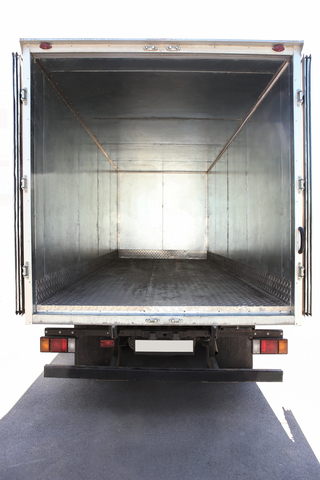
by Marketing | Aug 8, 2017 | News
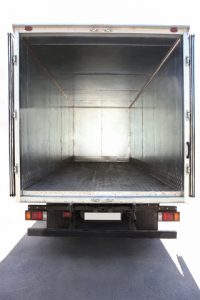 Over the past few years, it has become increasingly difficult to secure truckload capacity. Currently, the overall trend in the logistics industry is that freight volume continues to increase, while truckload capacity cannot keep pace. In order to secure truckload capacity, you must understand the challenges associated with it which include truck driver shortages, increased regulations, and various economic factors.
Over the past few years, it has become increasingly difficult to secure truckload capacity. Currently, the overall trend in the logistics industry is that freight volume continues to increase, while truckload capacity cannot keep pace. In order to secure truckload capacity, you must understand the challenges associated with it which include truck driver shortages, increased regulations, and various economic factors.
Truck Driver Shortages
For several years running, driver shortages have been a consistent issue in the trucking industry. The two main factors that have led to a shortage in drivers include the number of drivers retiring and the amount of growth within the trucking industry. With the increasing number of drivers retiring, there is just not enough qualified applicants that can replace these jobs. The American Trucking Associations (ATA) estimates that by 2024, there will be a shortage of nearly 175,000 drivers. As the trend line for freight volume continues to increase, the number of drivers required simply can’t keep up.
Increased Government Regulation
As government regulations continue to increase, every business is affected in a unique way. Currently, CSA compliance, E-Logs, and Hours of Service regulations are affecting drivers and their availability. These regulations can be a burden to shippers because of the possibility of penalties, fees, and infractions if they are violated. Some infractions from government regulation can even revoke operating authority for freight carriers leading to an even larger shortage of drivers. Currently, the Electronic Logging Device (ELD) mandate is set to take effect this December. This regulation is causing major concern in the trucking industry and some carriers are even worried they may have to leave the industry or at the very least remove trucks from circulation.
Economic Factors
Not only is government regulation and driver shortages making it difficult to secure truckload capacity, but economic factors are also having an impact. A main concern in the industry right now is trucking equipment shortages. These shortages are due to the fact that economic pressure forced carriers into holding onto tractors and trailers longer than normal because these companies could not afford to replace them right away. Now that many carriers are in a position to replace old equipment, the demand for tractors and trailers has spiked while production has not. As a whole, truckload capacity is becoming harder and harder to secure because of factors such as this.
Securing truckload capacity can be very difficult and time-consuming due to the shortages, regulations, and economic factors affecting the trucking industry. Logistics Plus can help ensure you secure valuable truckload space. Contact us today!

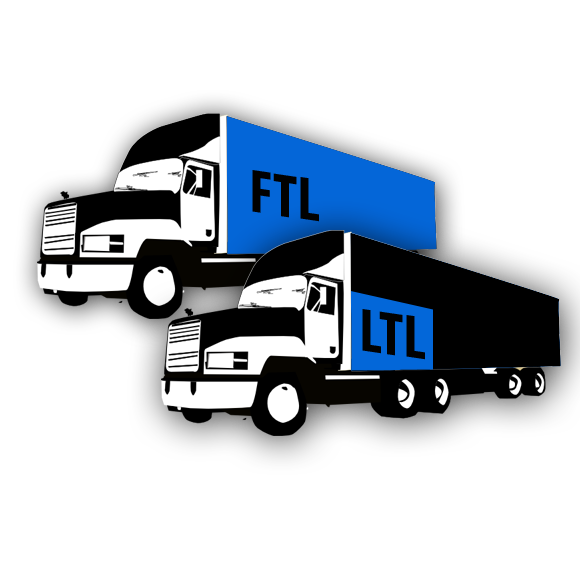
by Marketing | Jul 19, 2017 | News
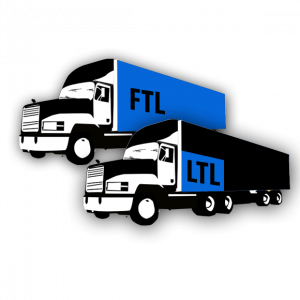 Shipping freight may seem like a very complex process due to the number of options available. It’s important to understand the differences between Full Truckload (FTL) shipping and Less Than Truckload (LTL) shipping because they are two of the most commonly used transportation options within North America. Shippers must consider size, speed, and price when deciding between a FTL versus LTL. Here are the main differences between FTL and LTL shipments to help you decide which shipping method works best for you.
Shipping freight may seem like a very complex process due to the number of options available. It’s important to understand the differences between Full Truckload (FTL) shipping and Less Than Truckload (LTL) shipping because they are two of the most commonly used transportation options within North America. Shippers must consider size, speed, and price when deciding between a FTL versus LTL. Here are the main differences between FTL and LTL shipments to help you decide which shipping method works best for you.
The main differences between FTL and LTL shipments can be broken down into four categories:
Size
The first thing you must take into consideration when shipping freight is the size. The names Full Truckload and Less Than Truckload are self-explanatory and mean exactly what they say. LTL shipments are smaller shipments typically ranging from 100 to 5,000 pounds. These smaller shipments will not fill an entire truck, leaving space for other small shipments. On the other hand, FTL shipments fill most to all of an entire truck and tend to be much larger, often weighing 20,000 pounds or more. Shipments that weigh between approximately 5,000 and 10,000 pounds can sometimes move either LTL or FTL. When such shipments move LTL, they are often referred to as “volume LTL” shipments; and when they move FTL, they are often referred as “partial TL” shipments (read more about Volume LTL and Partial TL here).
Price
Since LTL shipments are smaller and leave room for other shipments, they are cheaper because you will only pay for the space that you use. FTL shipments use most of the entire truck and cost more because you are paying for more space in the truck. The decision between choosing a FTL or LTL is crucial because if you choose the wrong option, you may end up paying for space that you aren’t even using.
Time
If you are pressed on time and need to have something shipped quickly, FTL may be the way to go. Since LTL shipments involve more than just your shipment, they often require multiple stops and transfers before they reach the final destination. Typically, FTL shipments pick up and deliver on the same truck leading to a quicker delivery time.
Handling
Along with how quickly you need a shipment to go out, you must also consider how delicate or high-risk the shipment is. With FTL shipping, your shipment will stay on the same truck and will not be transferred anywhere else. This creates less risk of damaged or missing items when shipping FTL. On the other hand, LTL shipments may switch trucks or be transferred multiple times before delivery, increasing the risk of damaged or missing items.
Choosing the correct shipping method is crucial for saving time and money for your company. If you have LTL or FTL shipping needs, then look no further than Logistics Plus! Contact us today.

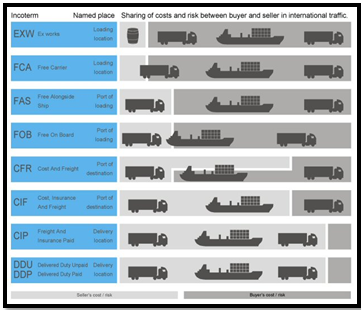
by Marketing | Jul 11, 2017 | News
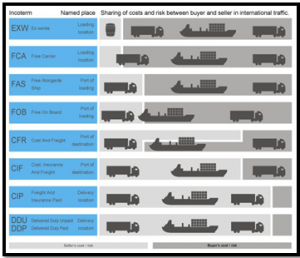 Incoterms® is an abbreviation for “International Commercial Terms.” This term represents a very useful way of communication and it’s actually aimed at reducing confusion between buyers and sellers.
Incoterms® is an abbreviation for “International Commercial Terms.” This term represents a very useful way of communication and it’s actually aimed at reducing confusion between buyers and sellers.
So what is an incoterm? An incoterm represents a universal term that defines a transaction between importer and exporter so that both parties understand the tasks, costs, risks, and responsibilities, as well as the logistics and transportation management from the exit of the product to the reception by the importing country. Incoterms are all the possible ways of distributing responsibilities and obligations between two parties. It is important for the buyer and seller to pre-define the responsibilities and obligations for the transport of the goods.
Here are the main responsibilities and obligations:
- Point of delivery: here, the incoterms defines the point of change of hands from seller to buyer.
- Transportation costs: here, the incoterms define who pays for whichever transportation is required.
- Export and import formalities: here, incoterms define which party arranges for import and export formalities.
- Insurance cost: here, incoterms define who takes charge of the insurance cost.
Advantages of using incoterms:
- As they stand today, there are 11 main terms and a number of secondary terms that help buyers and sellers communicate the provisions of a contract in a clearer way; therefore, reducing the risk of misinterpretation by one of the parties.
- Incoterms govern everything from transportation costs, insurance to liabilities. They contribute to answering questions such as “When will the delivery be completed?” “What are the modalities and conditions for transportation?” and “How do you ensure one party that the other has met the established standards? Having said that, it is important to remember that there are also limits to Incoterms. For example, they do not apply to contractual rights and obligations that do not have to do with deliveries. Neither do they define solutions for breach of contract.
Here’s what you should know about incoterms:
- Ex Works (EXW) – The seller makes the goods available at its location, so the buyer can take over all the transportation costs and also bears the risks of bringing the goods to their final destination.
- Free Carrier (FCA) – The seller hands over the goods into the disposal of the first carrier. After the buyer takes over all the costs, the risk passes when the goods are handed over to the first carrier.
- Free Alongside Ship (FAS) – The seller must place the goods alongside the ship at the named port, the risk of loss or damage to the goods passes when the goods are alongside the ship, and the buyer bears all the costs from that moment on.
- Free on Board (FOB) –The seller must load the goods on board of the ship, nominated by the buyer. Cost and risk are divided when the goods are actually on board.
- Cost and Freight (CFR) –Seller must pay the costs and freight to bring the goods to the port of destination. Although the risk is transferred to the buyer when the goods are loaded on the ship.
- Cost, Insurance and Freight (CIF) –It’s exactly like CFR except that the seller must in addition procure and pay for the insurance.
- Carrier and Insurance Paid to (CIP) –The seller pays for the carriage and insurance to the named destination point, but risk passes when the goods are handed over to the first carrier.
- Delivered Duty Paid (DDP) –The seller is responsible for delivering the goods to the named place in the country of the buyer, and pays all costs in bringing the goods to the destination.
You will find a handy Incoterms 2010 Quick Reference Guide on the Logistics Plus website. Additionally, you can check out our short Introduction to Incoterms 2010 Webinar online.

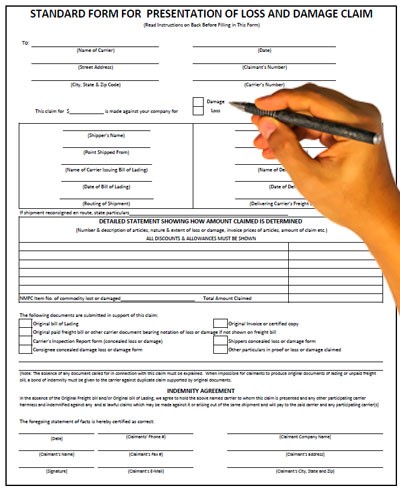
by Marketing | Jun 27, 2017 | News
 Learning how to effectively file a freight claim is important because it will save time and money for your company. A freight claim is a legal demand for the payment of money, stemming from the breach of a contract of carriage. Following specific guidelines and processes is the only way to correctly deal with these claims. There are four essential elements to filing a freight claim:
Learning how to effectively file a freight claim is important because it will save time and money for your company. A freight claim is a legal demand for the payment of money, stemming from the breach of a contract of carriage. Following specific guidelines and processes is the only way to correctly deal with these claims. There are four essential elements to filing a freight claim:
- The shipment must be identified so the carrier can complete an investigation.
- The type of loss or damage must be stated.
- The amount for the claim must be stated.
- A demand for payment by the carrier must be included.
On top of making sure all four elements are included, follow these tips and suggestions to make sure you effectively file your next freight claim:
- Take immediate action
- Taking immediate action is a crucial step of effectively filing a freight claim. Freight claims for loss or damage are generally governed by Title 49, CFR. Claimants must file the claim, in writing, within the time limits specified in the bill of lading or contract of carriage. The time period cannot be more than 9 months (49 USC 14706e) from date of delivery or, if never delivered, the expected delivery date. Unless otherwise agreed upon in a contract, a carrier must acknowledge receipt of a claim within 30 days. The carrier must then pay, offer to compromise or disallow the claim within 120 days or provide status reports every 60 days thereafter. If the carrier fails to abide by these periods, it should be notified that it is violating the FMCSA claim regulations. Furthermore, per the National Motor Freight Traffic Association, concealed damage must be reported to the carrier within 5 days. After 5 days, if the carrier has not been alerted of the damage, they retain the right to deny the claim. The customer then becomes responsible for providing proof that the damaged or missing items were the result of poor actions on behalf of the carrier. If the customer is unable to provide such proof, the claim will be considered invalid.
- Attempt to mitigate the damages
- A responsibility that all parties of the shipping process share is attempting to mitigate damages. It is your responsibility to give a good faith effort to salvage damaged products unless you consider them to be totally or substantially useless and of no good.
- Make supporting documentation available
- Including supporting documentation is necessary for correctly filing a freight claim. If available, you should include the original bill of lading (BOL), the paid freight bill, inspection reports, notification of loss, copies of request for inspection, invoices, waivers, and other appropriate documents such as temperature reports and weight certificates. The more information you have regarding the freight, the more effective your claim will be.
- Create a detailed description of the losses or damages
- A detailed description of the loss or damage should be properly displayed. The claimant should include the number of items damaged, the type of damage, the value of each unit, and the net loss which results in the total amount of the claim. For example:
- 15 boxes of cell phones – (water damaged) @ $500 each: $7,500
- 5 boxes of cell phone cases – (crushed) @ $100 each: $500
- Total Damages: $8,000
- Amount Salvaged: $250
- Total Claim Amount: $7,750
- The role of 3PLs, brokers or intermediaries
- Many shippers use the services of intermediaries such as brokers or 3PLs (like Logistics Plus) to arrange with carriers for the transportation of their goods. Ordinarily a broker or 3PL does not have any liability for loss or damage since it is not a carrier and does have physical possession or control over the shipments. As a value-added service, Logistics Plus will generally offer to handle the filing and/or collection of claims on behalf of our customers. We also make available the various documents shippers need to file claims. This should not be confused with an assumption of liability, however; and claims must still be filed in your name (not that of Logistics Plus).
If you frequently ship LTL freight or truckload shipments, freight losses and damages are almost inevitable at some point during the process. That’s why it’s important to have an experienced and caring freight management partner on your side. When you work with Logistics Plus, we’ll gladly assist you with the filing or processing of your freight claims, and we’ll go to bat for you with the carriers to best represent your interests. Contact us today to learn more.






 Over the past few years, it has become increasingly difficult to secure truckload capacity. Currently, the overall trend in the logistics industry is that freight volume continues to increase, while
Over the past few years, it has become increasingly difficult to secure truckload capacity. Currently, the overall trend in the logistics industry is that freight volume continues to increase, while 

 Shipping freight may seem like a very complex process due to the number of options available. It’s important to understand the differences between Full Truckload (FTL) shipping and Less Than Truckload (LTL) shipping because they are two of the most commonly used transportation options within North America. Shippers must consider size, speed, and price when deciding between a FTL versus LTL. Here are the main differences between FTL and LTL shipments to help you decide which shipping method works best for you.
Shipping freight may seem like a very complex process due to the number of options available. It’s important to understand the differences between Full Truckload (FTL) shipping and Less Than Truckload (LTL) shipping because they are two of the most commonly used transportation options within North America. Shippers must consider size, speed, and price when deciding between a FTL versus LTL. Here are the main differences between FTL and LTL shipments to help you decide which shipping method works best for you.

